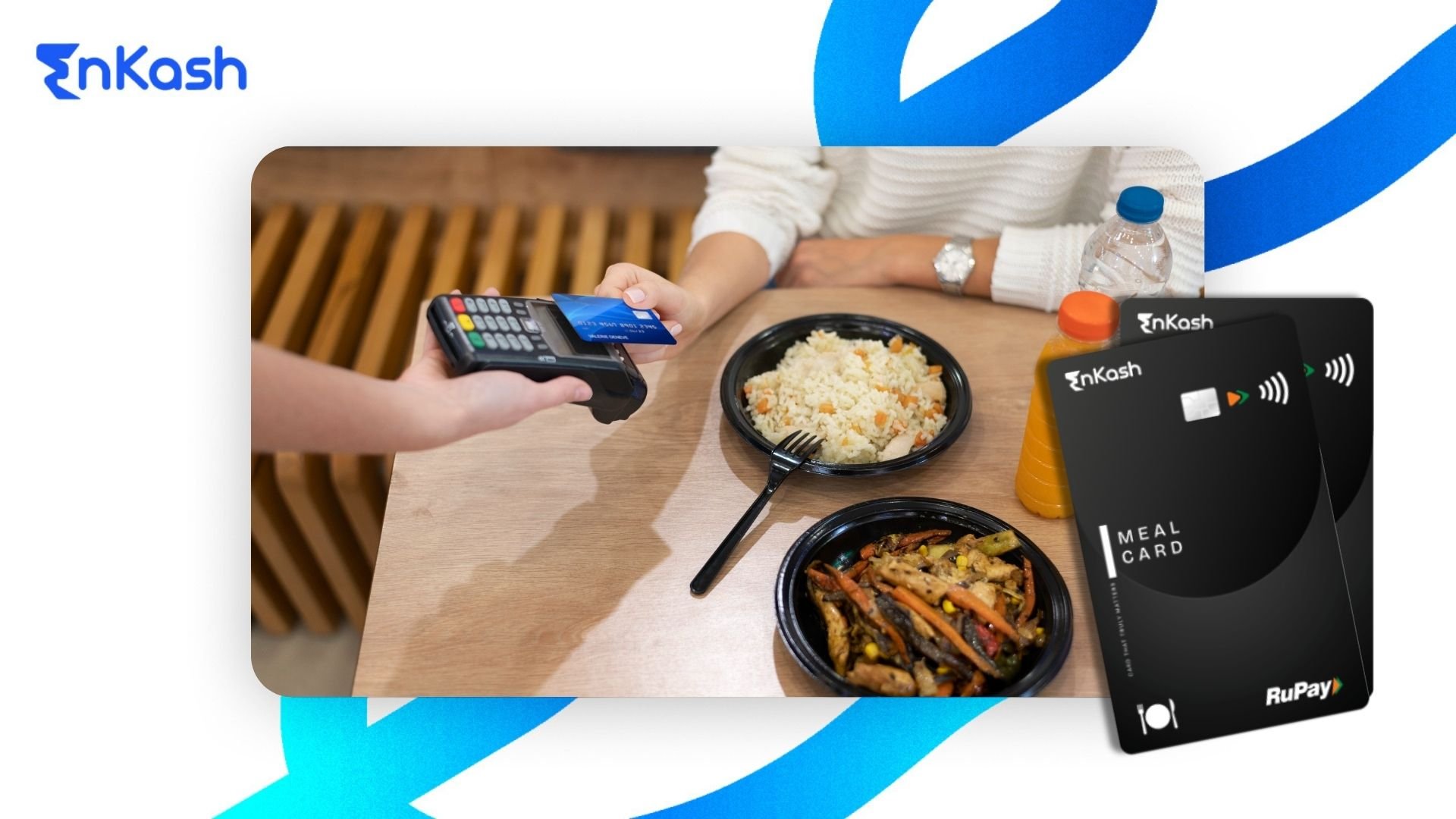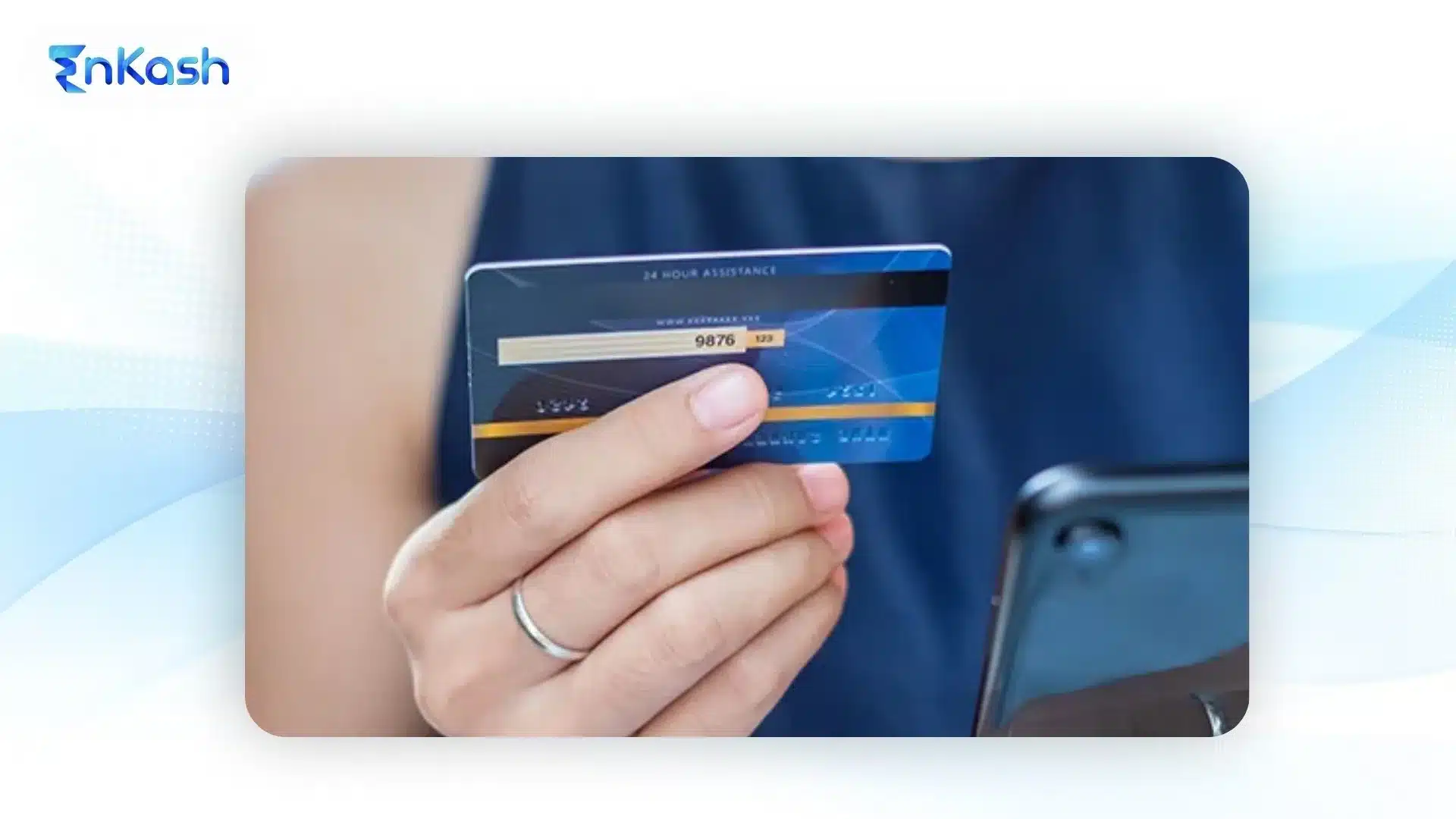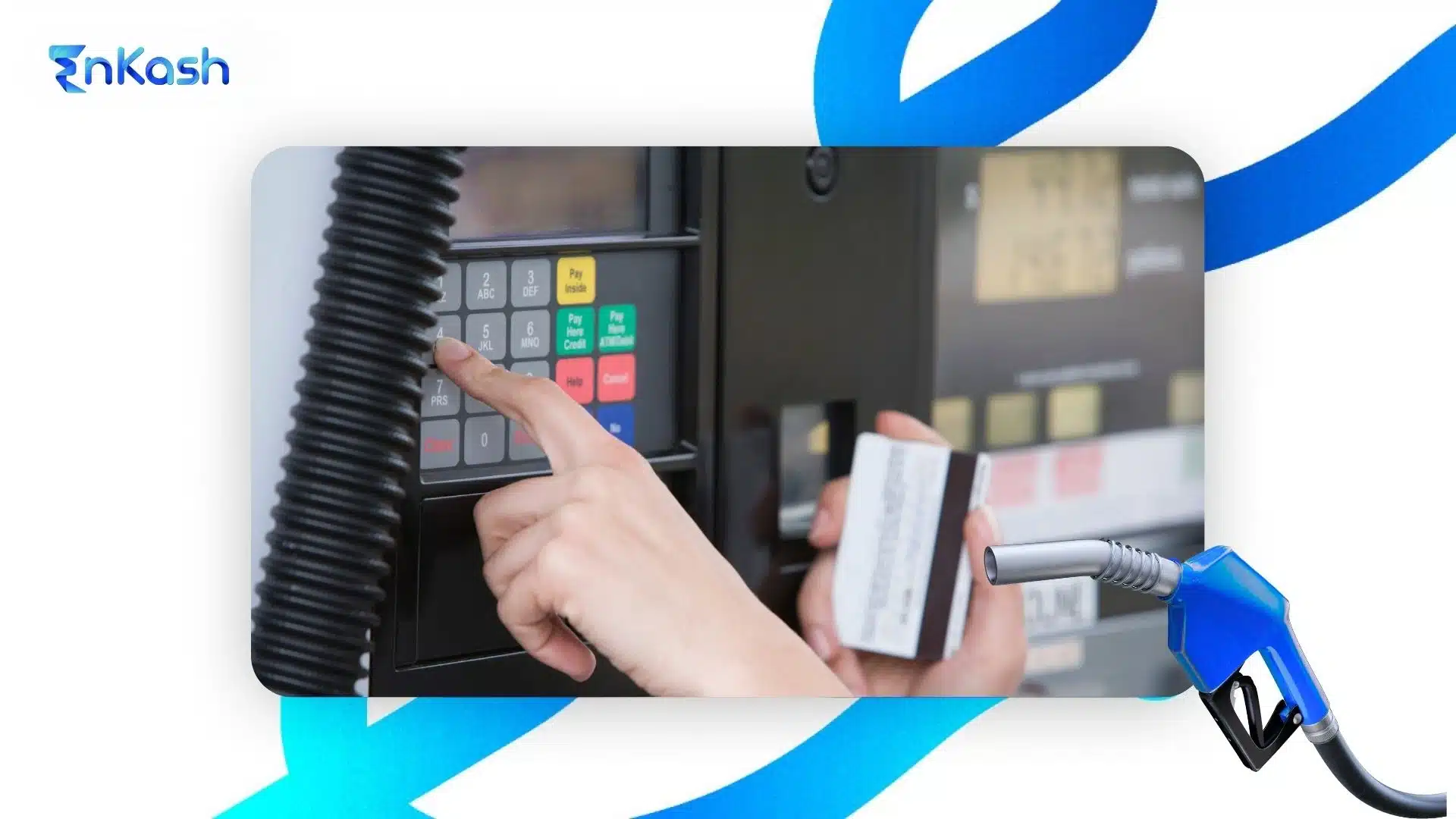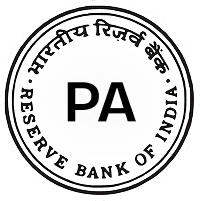Prepaid cards for meals have become a popular way to pay for food. They are simple to use and offer flexibility. Some people get them from employers as meal allowances. Others use them to gift meals through restaurant vouchers. These cards come in different types and formats.
In India, prepaid meal cards are accepted at a wide range of places, like restaurants, supermarkets, food delivery platforms, and more.
For companies, these cards make it easier to manage staff meal benefits without the need for handling cash or paper vouchers. For individuals, they offer more control over food spending and remove the need to carry cash.
Keep reading this blog to learn everything about prepaid meal cards.
What is a Prepaid Meal Card?
A prepaid meal card is a payment card that holds a fixed amount of money. This money is meant only for food-related purchases. Prepaid meal cards work like a debit card but can be used only for dining expenses.
These types of cards are not linked to any kind of bank accounts, payment cards, or even wallets. Instead, they come with a stored balance. You can use them at restaurants, cafés, grocery stores, and other food outlets.
Prepaid meal cards can be either physical cards or digital ones.
Meal cards serve various purposes:
- Employee Meal Benefits: Several companies give meal cards to their employees these days. Mostly, they offer it as a part of their salary package. These cards are reloadable; usually, employers top them up monthly with a certain amount. Employees can use them to pay for meals, snacks, or groceries. The amount is taken from their pre-tax salary, which helps save tax.
- Gift Cards for Meals: Some prepaid meal cards are used as gift cards. These are non-reloadable and are loaded with a fixed value. They are meant to be gifted so someone can use them for dining or food delivery.
- Personal Budgeting: People can also use prepaid meal cards to set a food budget. For example, you might load a set amount each month just for eating out or food orders so that you don’t spend more than your set budget. This helps not only control spending but also save from your monthly expenses.
Read More: India’s Payment Gateway Future: UPI, APIs & Digital Wallets
Reloadable vs. Non-Reloadable Meal Cards
One notable difference in prepaid cards is whether the card is reloadable or it is non-reloadable. Let’s check out the section below and learn how reloadable and non-reloadable meal cards work and how they are different.
Reloadable Meal Card
A reloadable meal card can be topped up many times. You can keep using it until the expiry date. This type is commonly used for employee meal cards or general-purpose prepaid cards. For example, an employer may load the meal card every month with a set allowance. As long as money is added, the card stays active and usable as well.
Reloadable cards usually have the user’s name printed on them. They are meant for regular personal use. These cards often have a longer validity, usually up to 5 years. Since meal allowances are a recurring benefit, employee meal cards are almost always reloadable.
Non-Reloadable Meal Card
A non-reloadable card is loaded once with a fixed amount. You cannot add money to it again. Once the full amount is used, the card becomes inactive. It is often disposed of or automatically deactivated.
Gift cards fall under this type. They are prepaid cards given with a set value, meant for someone else. Once the person uses the full amount, the card cannot be reused. A new gift card must be purchased if they are to be gifted again.
Non-reloadable cards are perfect for one-time gifts, rewards, or promotions. They are used once and then discarded. These cards usually don’t have the user’s name and are sometimes anonymous or bearer cards. They also have shorter validity, often between 1 and 3 years.
Which One Should You Choose?
The choice depends totally on your purpose.
If you need a meal card for ongoing use, such as regular meal allowances or personal food budgeting, then you must go for a reloadable meal card. You can add money whenever needed and use it for the long term.
Employers usually give reloadable cards so employees can use them throughout the year. If you want to gift someone a meal, a non-reloadable gift card is the better option. It’s a one-time gift that comes pre-loaded. The giver pays in advance, and the recipient can use the balance until it runs out.
For instance, you give a prepaid meal card of ₹2000 to a dear friend as a gift. He spends exactly ₹2000 at a family dinner and pays using the card. Then, the card can not be used again as the total money is spent, and it can not be reloaded. You have to purchase a new one instead.
What are the Reasons behind the popularity of Prepaid Meal Cards
Here’s a quick look at why they are so popular:
Convenience:
Prepaid meal cards offer you nothing but an easy way to pay for meals. They are quick and cashless. They help you stay within your budget as they can not be used once the loaded money is spent. You can swipe or tap the card in person.
If you are ordering online, just enter the card details. There’s no need for you to carry change or keep receipts for reimbursements. For employees used to vouchers or cash, meal cards offer a one-step way to pay for food.
Budget Control:
Meal cards help manage your food budget. You load a fixed amount, which sets a spending limit. For instance, you may think of loading ₹5,000 as your monthly eating-out budget. And then you can use the card for all your dining expenses. This makes it easier to track spending and avoid going over budget.
Tax Savings:
Meal cards help manage your food budget. You load a fixed amount, which sets a spending limit. For instance, you may think of loading ₹5,000 as your monthly eating-out budget. And then you can use the card for all your dining expenses. This makes it easier to track spending and avoid going over budget.
Wide Acceptance and Choice:
Modern meal cards work at many places. These include office canteens, restaurants, fast food chains, coffee shops, grocery stores, and food delivery apps.
Safety and Security:
Meal cards are safer than cash. Most need a PIN when used in person. If lost, they can be blocked. These cards are issued by trusted financial companies. This means your money has some protection. For employers, using cards is safer than giving out cash or paper vouchers.
Digital Tracking:
Users can see their card balance and past transactions online or through an app. Employers can track how meal cards are used. This helps them make sure the benefit is used properly.
Promotions and Discounts:
Sometimes, using or buying meal cards comes with some added benefits. These can be lucrative discounts or mindblowing cashback offers. Some restaurants give special deals when you pay with these cards.
Read More: Best Prepaid, Reloadable & Expense-Friendly Options Explained
Meal Cards as an Employee Benefit
If you’ve ever received a “Sodexo card” or something similar from your employer, that’s a prepaid meal card.
How It Works
Companies partner with meal card providers or even some banks to issue prepaid cards to employees. These cards are reloadable and are funded by the employer. The amount added is part of your salary but that is reserved only for food.
For example, an employer may load ₹2,000 every month on your meal card as a food allowance. You can then use the card to buy meals or groceries, but only in approved categories.
Tax Benefit
In India, meal cards that follow the rules come with tax-free benefits up to a certain limit. Under the old tax regime, the Income Tax Act allows a tax exemption of up to ₹50 per meal, but only if provided during working hours either as free food at the office or through non-transferable meal vouchers usable exclusively at eating joints.
This allowance usually applies only to working days. If an employee gets two meals daily, that’s ₹100 per day. In a 22-day work month, this becomes ₹2,200 per month, or ₹26,400 per year, which is tax-free.
Some companies allow up to ₹150/day (likely for three meals), which comes to ₹4,500 per month. Still, most follow the ₹50 per meal cap.
As long as the total stays within the allowed limit, the amount is not taxed. This tax-free benefit applies only if you opt for the old tax regime. Under the new regime, such exemptions are not available and the full amount is taxable. This helps employees save more and take home higher pay.
It’s good for employers, too. It boosts morale without adding major costs. Depending on how meal card expenses are structured and accounted for, they may be considered deductible as employee welfare expenses under the Income Tax Act. If the value on the card doesn’t go over the tax-free limit, it’s not treated as a taxable perk.
Where You Can Use It
Meal cards in India are typically restricted to food and beverages—but this is enforced by card issuers, not RBI. RBI regulates prepaid instruments through licensing, KYC, and usage limits, but does not mandate food-only usage.
You can use these cards at restaurants, bakeries, coffee shops, and even in grocery stores. You can also use them on food delivery apps. These cards are widely accepted. Some popular meal cards work at over 1,00,000 outlets in India.
You cannot use the card for non-food purchases. That includes clothes, electronics, or services. Even inside a supermarket, only food items are allowed.
Some providers ensure this by restricting what you can buy at certain partner stores. Alcohol and tobacco are also blocked. The card system makes sure it’s used for food and non-alcoholic drinks only.
Benefits to Employees
Besides saving on taxes, meal cards give employees more choice and freedom. You’re no longer limited to an office cafeteria or tiffin service.
You get a set budget to spend on the food you prefer. It can be a nearby eatery or biryani from an app. This freedom improves job satisfaction.
Meal cards also encourage cashless payments and support digital tools. Most employees manage their cards using an app. They can check balances, view spending, and get alerts if the balance is about to be overdrawn.
There’s also a mental comfort in knowing, “This amount is only for food.” It feels easier to spend on quality meals.
Popular Meal Card Providers
In India, several major companies offer meal cards. These include Sodexo (Pluxee), which is often seen as the standard in meal benefits. Edenred (Ticket Restaurant) and fintech platforms like Zeta are also notable names.
Many banks also issue corporate meal cards. These include Axis Bank, HDFC’s FoodPlus Card, ICICI Bank, and others. Employers can choose any of these for their staff.
All these providers have partnerships with large vendor networks. Newer names like EnKash also offer prepaid cards. These can be set up as meal cards for employees.
An easy-to-understand example: Suppose your company gives you ₹2,200 per month as a meal allowance. This amount is loaded onto a prepaid meal card each month.
You go out for lunch and spend ₹300. You swipe the card, and ₹300 is deducted.
Later, you order food online. You choose “Sodexo card” as the payment method or enter the card number. Some meal cards support this online use. The app deducts the bill from your card balance.
If you don’t spend the full amount that month, the balance usually carries forward. Check your card’s rules to confirm. In most cases, the money remains until the card expires.
As per RBI regulations, prepaid meal cards cannot be used for ATM withdrawals or cash transfers. They are restricted to specific categories like food and non-alcoholic beverages.
Read More: Using Prepaid Cards for Employee Reimbursements: Smarter and Faster
A Few Examples of Meal Gift Cards
There are tons of options out there:
- Restaurant Chain Gift Cards: Many popular restaurant chains offer branded gift cards, typically closed-loop (usable only at that brand), though some operate via aggregators and may be accepted at multiple locations. You can easily buy e-gift cards for Domino’s Pizza, KFC, McDonald’s, Starbucks, Pizza Hut, Dunkin’ Donuts, and others.
- Multi-Restaurant Cards: Some prepaid meal gift cards work across a group of restaurants or cuisines. For example, “dining cards” may be accepted at several fine-dining restaurants. Aggregator platforms also offer gift cards that work at multiple food outlets.
- Food Delivery Gift Cards: Meal delivery gift cards are now very popular. In India, Swiggy and Zomato both offer gift cards. These can be used to order from any restaurant listed in their apps. These are ideal when you’re unsure about the recipient’s food preference. They get to choose from thousands of restaurants.
- Meal Subscription Gift Cards: Services like Factor offer subscriptions for ready-to-eat meals. These types of gift cards go beyond one-time meals. A Factor meal gift card covers a week or month of delivered meals.
- Open-Loop Prepaid Gift Cards: These are gift cards issued by Visa, MasterCard, American Express, and other networks. They can be used anywhere those networks are accepted. Though not food-specific, they can still be used to pay at restaurants.
In India, banks like Axis Bank and HDFC offer such one-time-use gift cards. These cards are flexible. The recipient can spend part on meals and the rest elsewhere. However, they usually come with a purchase fee.
How to Get a Meal Gift Card?
You can get them from restaurant websites or gift card platforms. Websites like Amazon, Paytm, and others sell many restaurant gift vouchers.
On Amazon India, you’ll find options like Domino’s, Zomato, and other brand-specific cards, sometimes with a discount. Usually, most gift cards are delivered via email. They come with a code and PIN.
You can even buy physical cards. These cards are easily available at supermarkets. You can also purchase them directly from restaurants. For corporate gifting, platforms like EnKash offer bulk purchase options.
Pros and cons of meal gift cards
For the giver, meal gift cards are a safe and thoughtful option. You’re treating someone to a meal of their choice. It’s better than giving cash as it does not look appropriate sometimes. Also, it is more flexible than choosing one specific restaurant as you may not know their favorite or the one you choose may not be of their taste.
However, there are some drawbacks. Gift cards can expire if not used. If they’re lost and not registered to a name, they might not be replaced. You may also be left with small unused balances which often go to waste. It’s best to use the full amount before the card expires.
Closed-loop gift cards also limit where you can use them. If you don’t like that restaurant or if it closes nearby, the card becomes less useful.
That said, there are many flexible options now. For example, a food delivery gift card works with many restaurants. An open gift card for “any restaurant” offers even more variety.
Free Meal Cards: Are They Real?
You might have seen the term “free meal card” in searches or random conversations. No wonder, it sounds exciting. Who wouldn’t want free meals? But what does it really mean?
In reality, there’s no such thing as a completely free lunch. The term “free meal card” can refer to a few different things.
- First, some employers or organisations may give out complimentary meal cards as rewards. For example, a company might gift top performers a prepaid meal card. It would have a set amount loaded on it. The employee gets it for free, so it feels like a gift, but it’s actually part of a reward system.
- Second, you might see promotional offers. A card provider may offer something like “Sign up and get a free ₹500 meal card.” These are marketing tactics, usually one-time. You don’t pay for the card value.
- Third, in some cases, government or institutional bodies may issue prepaid meal vouchers as part of welfare programs or relief efforts. These cards are funded by the sponsor and provided free to recipients, although such use cases are currently limited in India.
However, if “free” means unlimited meals at no cost, that doesn’t exist in the real world. Prepaid cards are always loaded by someone. Or they are part of a benefit where the cost is covered indirectly, like through a tax-free salary portion.
You should also be careful. Any website offering a “free meal card” out of nowhere, like a card for filling a survey or clicking a link, is likely a scam or phishing attempt. Real free meal vouchers usually come from trusted companies as part of genuine promotions.
That said, if you’re an employee using a company-issued meal card, the food might feel free. That’s because it’s part of your salary package and given without tax. But it’s not extra money; it comes from your total CTC. It’s still a smart way to save on meals you already buy.
Read More: Travel and Entertainment Prepaid Cards in India: All You Need to Know
Conclusion
Prepaid meal cards are a simple and flexible way to pay for food. You can use them every day as reloadable cards, or give them as prepaid gift cards for dining out. These cards are cashless, easy to use, and made only for spending on food.
In India, meal cards have changed how companies give lunch allowances. Paper coupons are gone. Now, employees use swipeable cards instead. These cards also come with tax-saving benefits.
Consumers enjoy the many options available in meal gift cards. With very few clicks, you can send a meal gift to close friends, family, or even yourself. Consumers also enjoy using and gifting meal cards because of the freedom they offer. You can choose your favourite food or restaurant. This can be done through a direct gift card or a food delivery voucher.
In the end, prepaid meal cards combine two key benefits. They help you stick to a budget while still letting you enjoy your food. They’re now a common workplace benefit and a popular gift idea.
If you haven’t tried one yet, now is a good time. It might be your key to smarter, happier, and more enjoyable meals.








